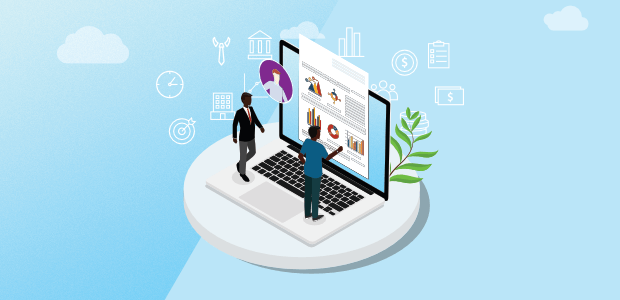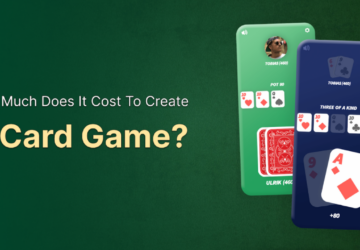Today, in Customer Relationship Management (CRM) systems, data is like the solid foundation that helps businesses make decisions and improve how they talk to customers. The amazing power of data visualization in CRM systems is hard to ignore. It helps people quickly understand complicated information by turning it into easy-to-understand pictures. This helps businesses determine how well they’re doing, and make customers happier. Think about a store using pictures to see what people buy based on their age or where they live. They can then make better plans to make customers like you happier. This article explores how using pictures to show data in CRM systems can really change how people feel about them.
What is Data Visualization?
Data visualization is the graphical representation of data and information using charts, graphs, and other visual elements. It transforms complex datasets into easily understandable and insightful visuals, aiding in pattern recognition, trend analysis, and communication of insights. Presenting data visually boosts comprehension, facilitates decision-making, and reveals hidden relationships within the data.
Role of Data Visualization in CRM Systems
Data visualization is crucial in Customer Relationship Management systems by transforming complex and disparate data into meaningful insights. All this can lead to better decision-making, improved customer interactions, and improved business strategies. Here’s how data visualization contributes to CRM systems:
1. Improved Data Understanding
Data visualization in CRM systems simplifies complex customer data, transforming it into intuitive charts, graphs, and dashboards. This enables users to quickly understand trends, patterns, and relationships within the data, aiding in effective decision-making.
With visual representations of key metrics, such as sales, customer interactions, and satisfaction, data visualization enhances data comprehension and empowers businesses to harness actionable insights from their CRM data.
2. Quick Insights
Visualizations such as charts, graphs, and dashboards show key performance indicators (KPIs) and metrics.
For instance, it can show how many products we sell each month. Instead of just numbers in a table, we can see a graph that goes up or down, telling us quickly if we did well.
This is like using a map to see where we’re going instead of just reading directions. Data visualization services make these helpful pictures for us to make smart choices in our business.
3. Identification of Trends and Patterns
When we use pictures and graphs to show information about customers in CRM systems, we can find special things that we might miss with just words and numbers. These special things are called trends and patterns.
Imagine looking at a picture that shows how many things people buy in different months. If we only look at a list of numbers, we might not notice that people buy more things during certain times.
But with the picture, it’s easy to see those times when more people buy. This helps businesses plan better because they know when they might sell more.
So, pictures and graphs help us find these hidden patterns and understand when customers do certain things more than others.
4. Segmentation and Personalization
Segmenting customers is like putting them into different groups based on their similarities. This helps businesses understand customers better.
Data visualization tools create pictures or graphs that show these groups clearly. Imagine you’re collecting toy preferences from kids.
You can use these tools to make colourful charts that show which toys are popular in different age groups. This way, you know what toys to make more of. Similarly, in businesses, these tools show which products or services different groups of customers like. This helps companies make special offers for each group, like discounts on certain things.
So, data visualization helps businesses treat each group of customers in a special way, like how you choose toys for friends of different ages.
5. Forecasting and Predictive Analysis
Do you know utilizing data visualization in custom CRM development assists in predicting future outcomes? Yes. Using graphs and charts, businesses can better understand what might happen next based on past trends. This helps them plan for things like how many products to make or which customers might need attention.
These visual tools also show changes as they occur so that teams can respond quickly to anything unexpected. Imagine a weather forecast but for sales or customer behavior. It’s like having a crystal ball that guides decisions.
This prediction power aids companies in creating better strategies and serving customers more effectively.
6. Real-time Monitoring
In a simpler sense, imagine a dashboard like the dashboard in a car. It shows you the speed, fuel, and other important things at a glance. So you know how your car is doing.
Similarly, in CRM systems, some dashboards show how a company is doing with its customers. These dashboards use pictures and graphs to tell the story. This helps teams like sales, marketing, and customer service work together better. The dashboard can light up or show a warning if something needs attention.
It’s like having a map for a journey – it keeps everyone on the same road. Just like a car dashboard helps you drive smoothly, CRM dashboards help companies work together and keep customers happy.
7. Benchmarking and Goal Tracking
Benchmarking and Goal Tracking are essential tools that assist businesses in measuring progress and achieving their objectives. They provide a way to set clear goals and monitor how well they are being met.
Here’s how they can help:
- Goal Setting: Clear goals help companies know where they’re headed and what they want to achieve. Goals provide direction, whether it’s increasing sales, improving customer satisfaction, or enhancing efficiency.
- Measuring Progress: Benchmarking allows companies to compare their performance against established standards or competitors. This comparison shows how far they’ve come and where improvements are needed.
- Adaptation: If a business isn’t meeting its goals, benchmarking helps identify areas requiring adjustment. This might involve changing strategies for reallocating resources to align with the desired outcomes.
- Motivation: Tracking progress and seeing positive results can motivate teams to strive for excellence. It creates a sense of accomplishment and a drive to achieve even more.
- Efficiency and Accountability: These tools promote accountability within teams and departments. When everyone is aware of targets and progress, collaboration and responsibility improve.
8. Data-driven Decision-making
In customer management, seeing data in pictures helps make smart choices. When graphs and charts show how sales are going and what customers like, it’s easier for bosses to pick good strategies. These pictures also help different groups work together and discuss what to do.
Plus, they make it simple to tell others who might not know lot about data what’s going on. By looking at these clear pictures, managers can make good decisions about how to sell things, talk to customers, and use resources.
This way, the business can do better, and customers can be happier.
Impact of Data Visualization on Users in CRM Systems
Data visualization plays a pivotal role in CRM systems by providing users with meaningful insights and enhancing their decision-making processes. The benefits of data visualization in CRM systems are numerous and contribute to improved user experiences and overall organizational success. Here’s how data visualization impacts users in CRM systems:
- Clear Insights: Visuals make data easy to understand, helping users quickly grasp customer trends and patterns.
- Quick Decisions: Visualised data lets users spot opportunities or issues faster, aiding them in making timely choices.
- Engagement: Colourful charts and graphs capture attention, making the CRM system more interesting and encouraging user interaction.
- Personalization: Visuals help users tailor customer experiences better by showing individual preferences and behaviours.
- Predictive Power: Visualised data can reveal future trends, enabling users to anticipate customer needs and plan ahead.
- Collaboration: Visuals are easy to share and discuss, promoting teamwork and alignment among users in the CRM system.
Best Practice for Effective Data Visualization in CRM Systems?
There are many practices for effective data visualization in CRM systems; however, One common practice for making data visualization effective in CRM systems is to prioritize simplicity. When creating visualizations, keep them clear and easy to understand. Use charts like bar graphs, pie charts, or line graphs to represent data. Avoid overcrowding with excessive data points or complex visuals that can confuse users.
- Focus on presenting the most relevant information for the task at hand.
- Choose colours that are easy on the eyes and ensure proper contrast for readability.
- Provide clear labels and legends to help users interpret the data without confusion.
Additionally, customize visualizations based on user roles and needs. Sales teams might need different visualizations compared to marketing teams. Allow users to interact with visualizations, such as filtering data or toggling between different views, to gain deeper insights.
Remember: The goal of data visualization in CRM is to make data meaningful and actionable. Prioritizing simplicity ensures that users quickly grasp the information. This leads to more informed decisions and improved customer relationships.
Try Better Data Views in Your CRM Now
Data visualization makes customer data easier to understand in CRM systems. It helps people make smarter decisions and understand how customers behave. You can see important things quickly with charts, graphs, and maps. Remember, using good data visualization is like having a clear customer picture–it improves your work and helps your business grow. So, start using data visualization in your CRM system and see the positive changes for yourself.







